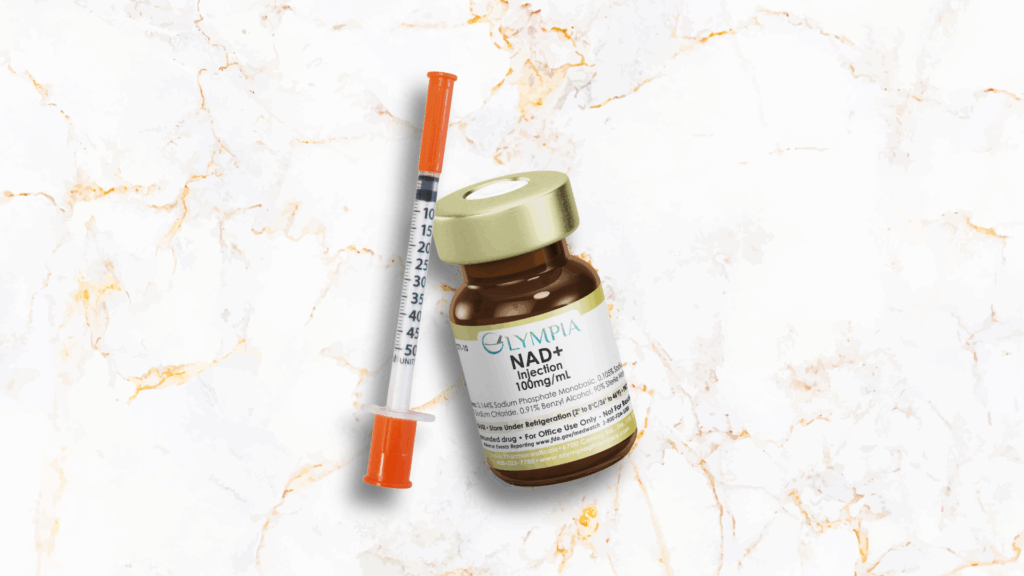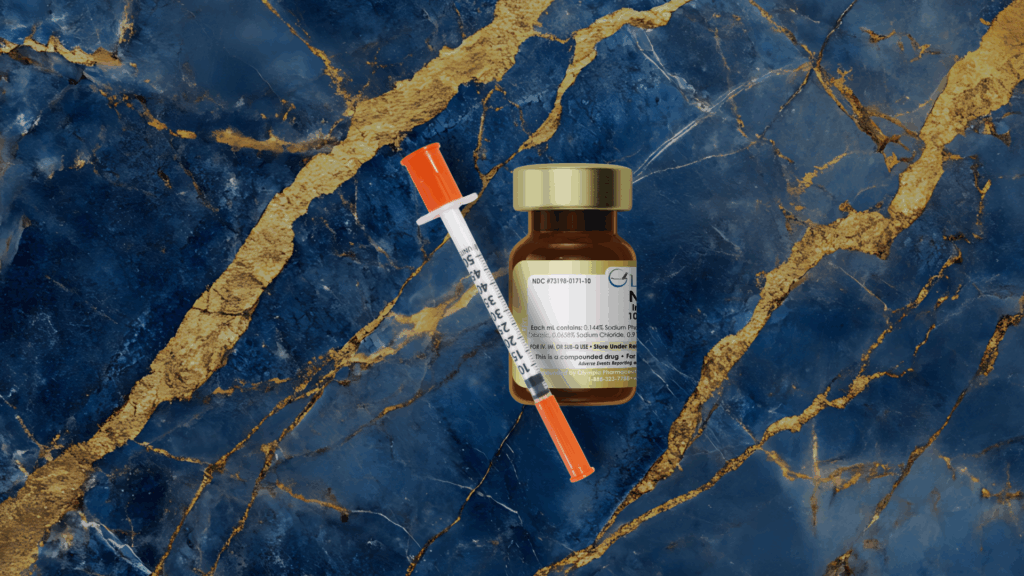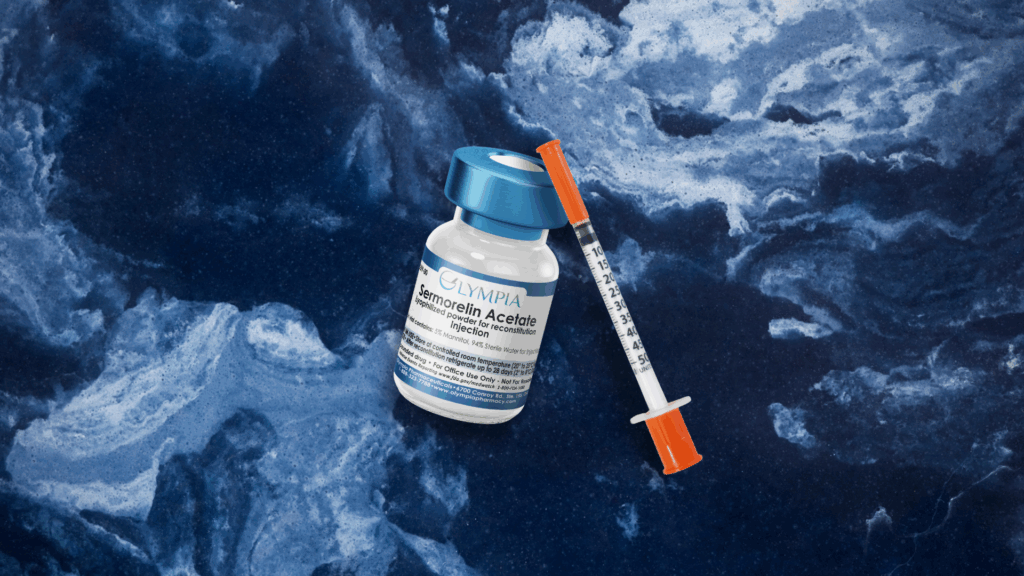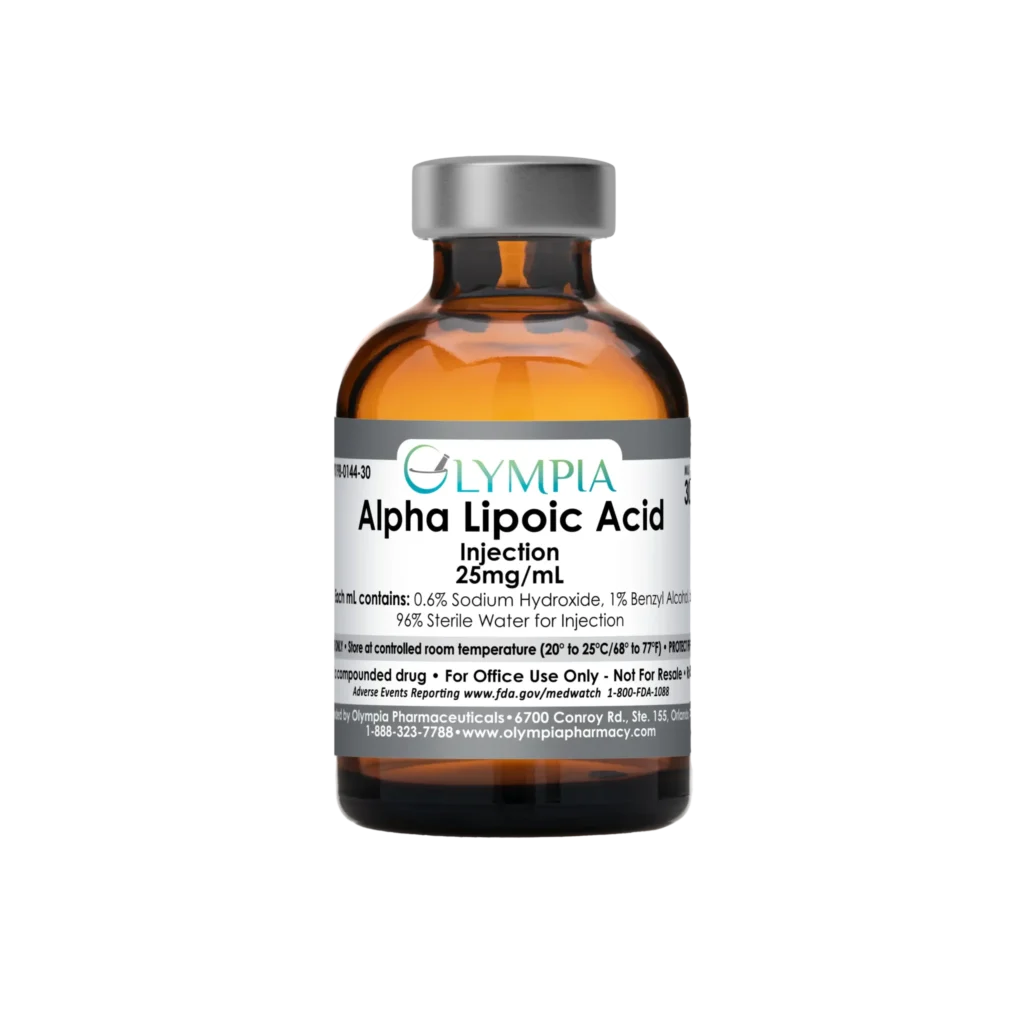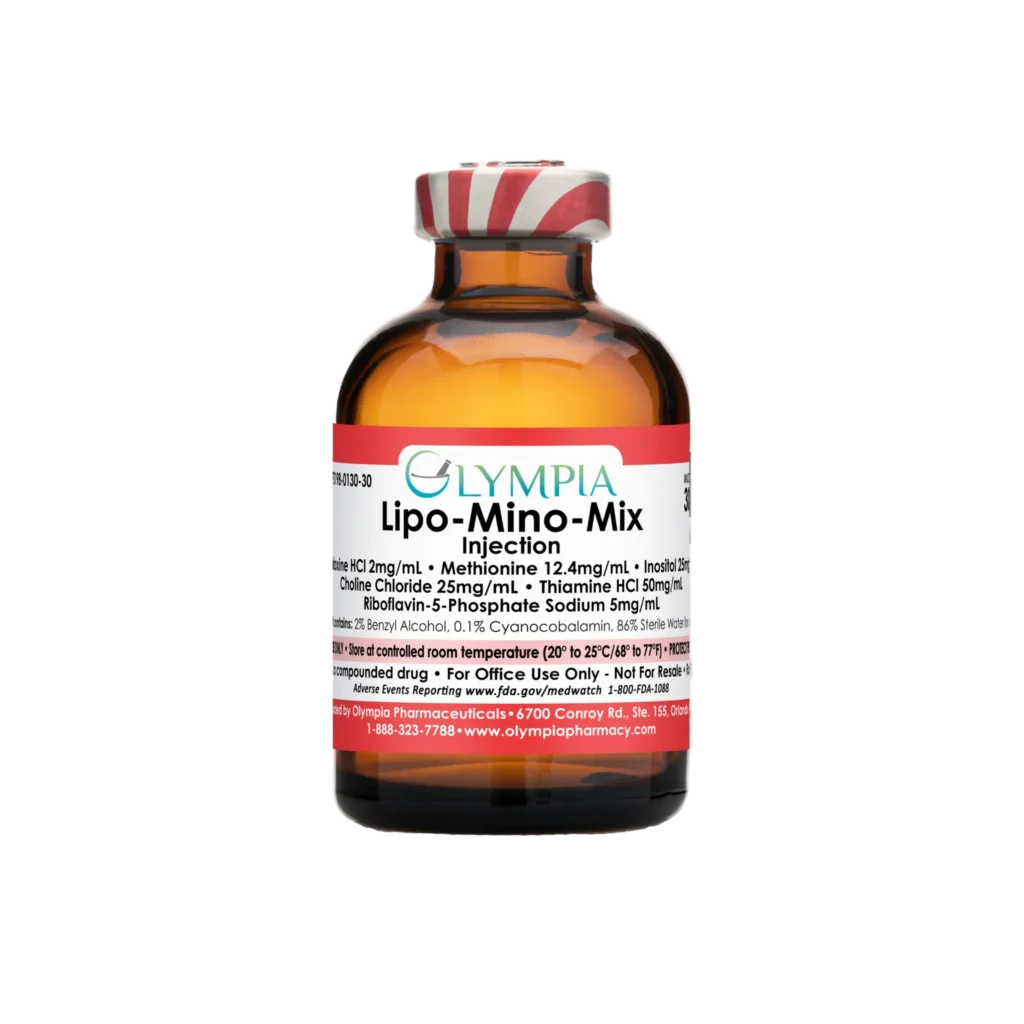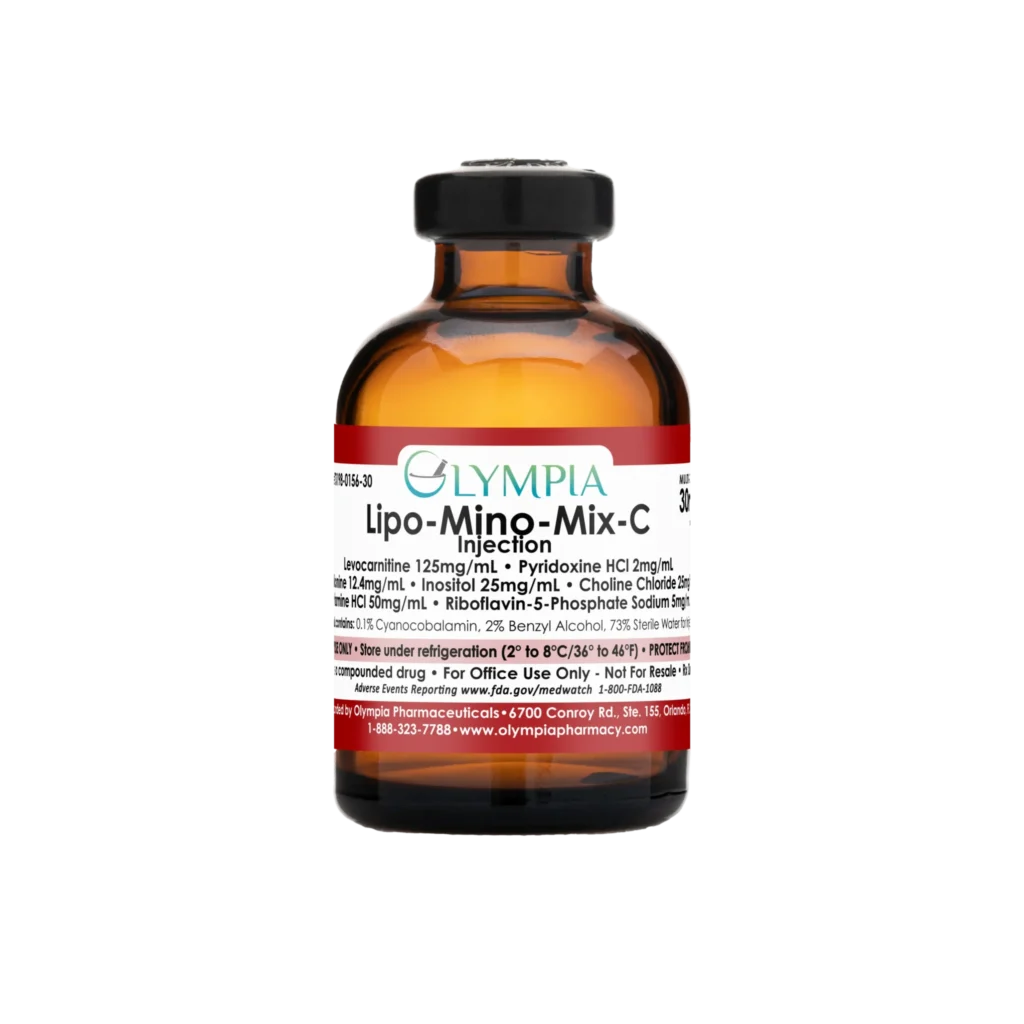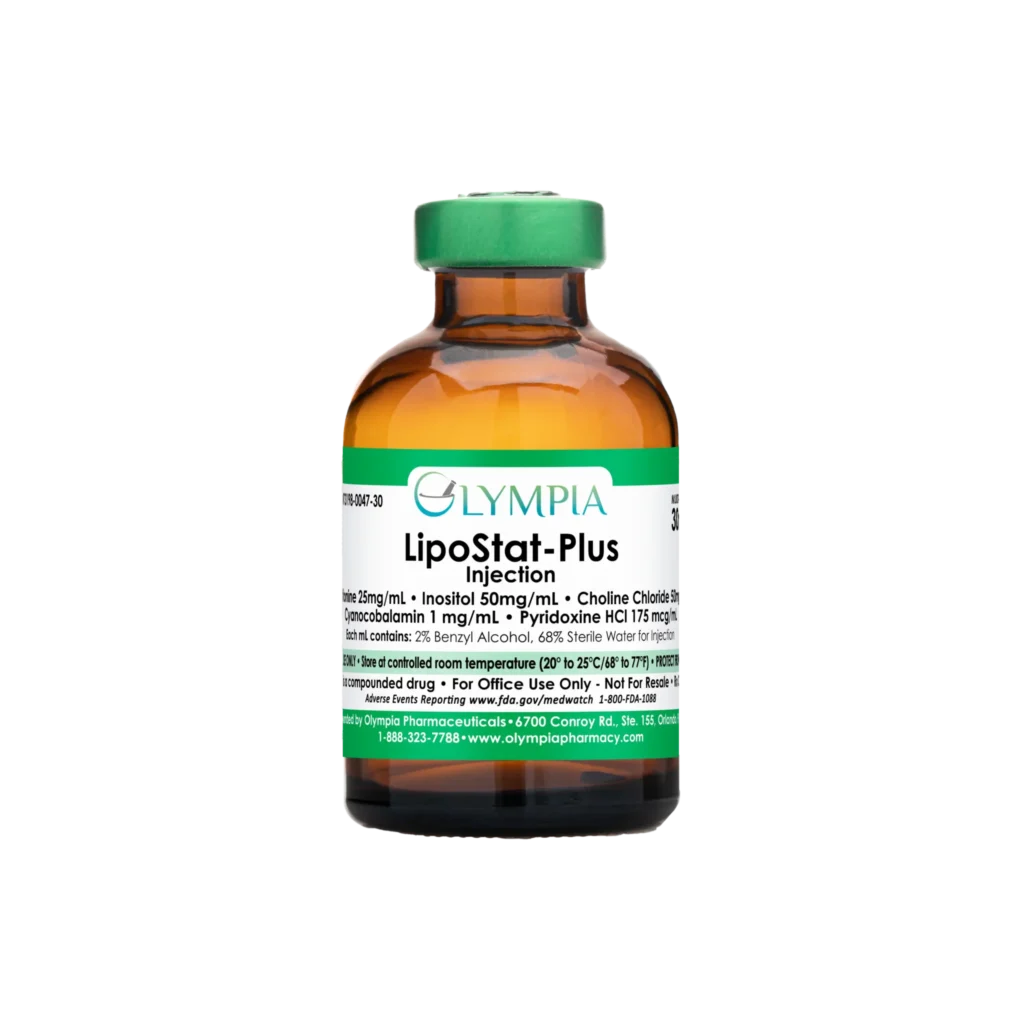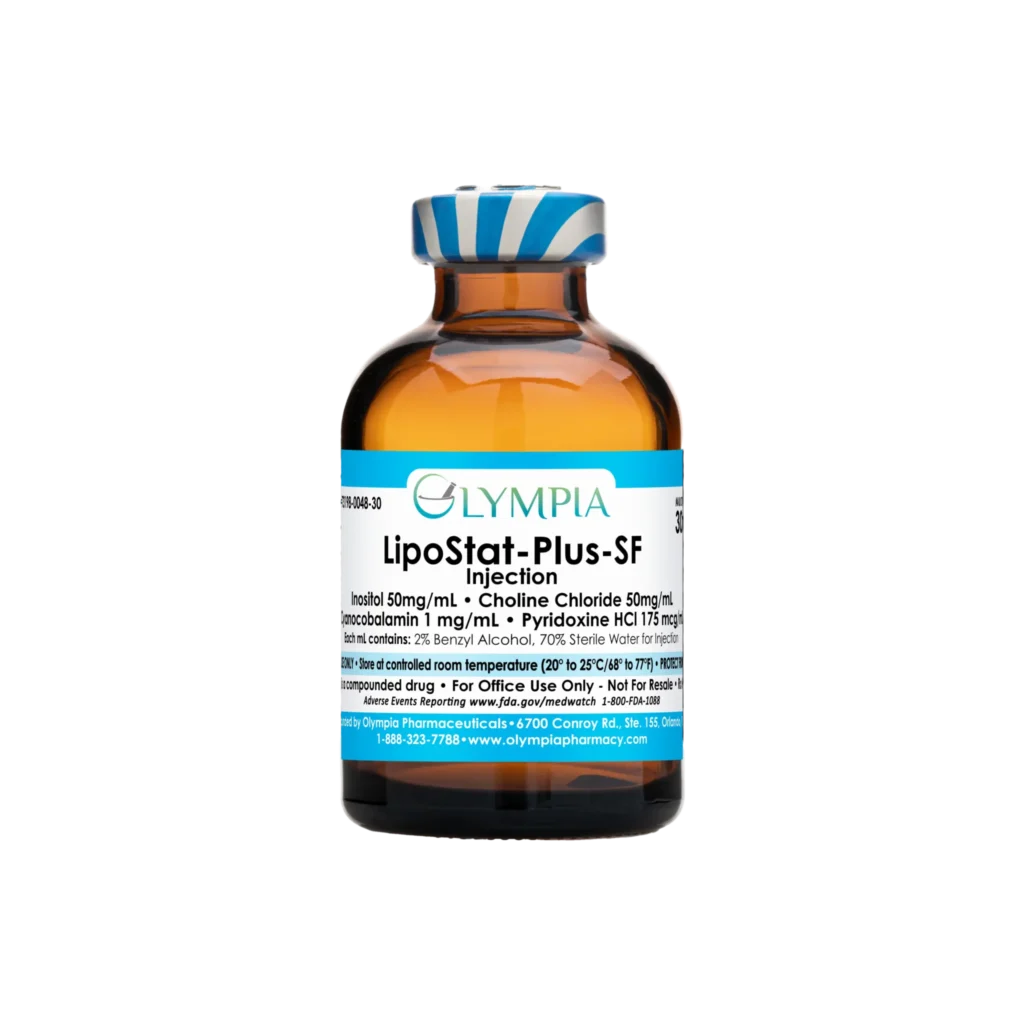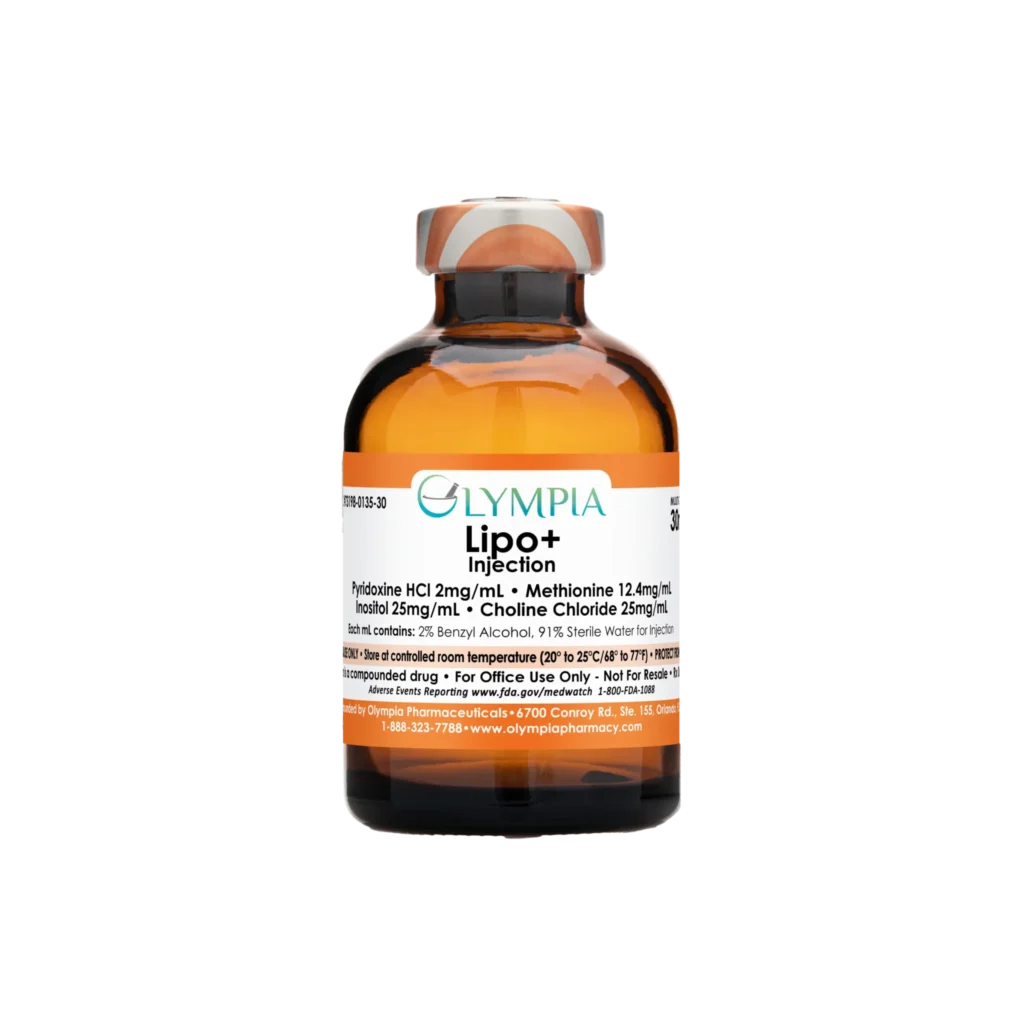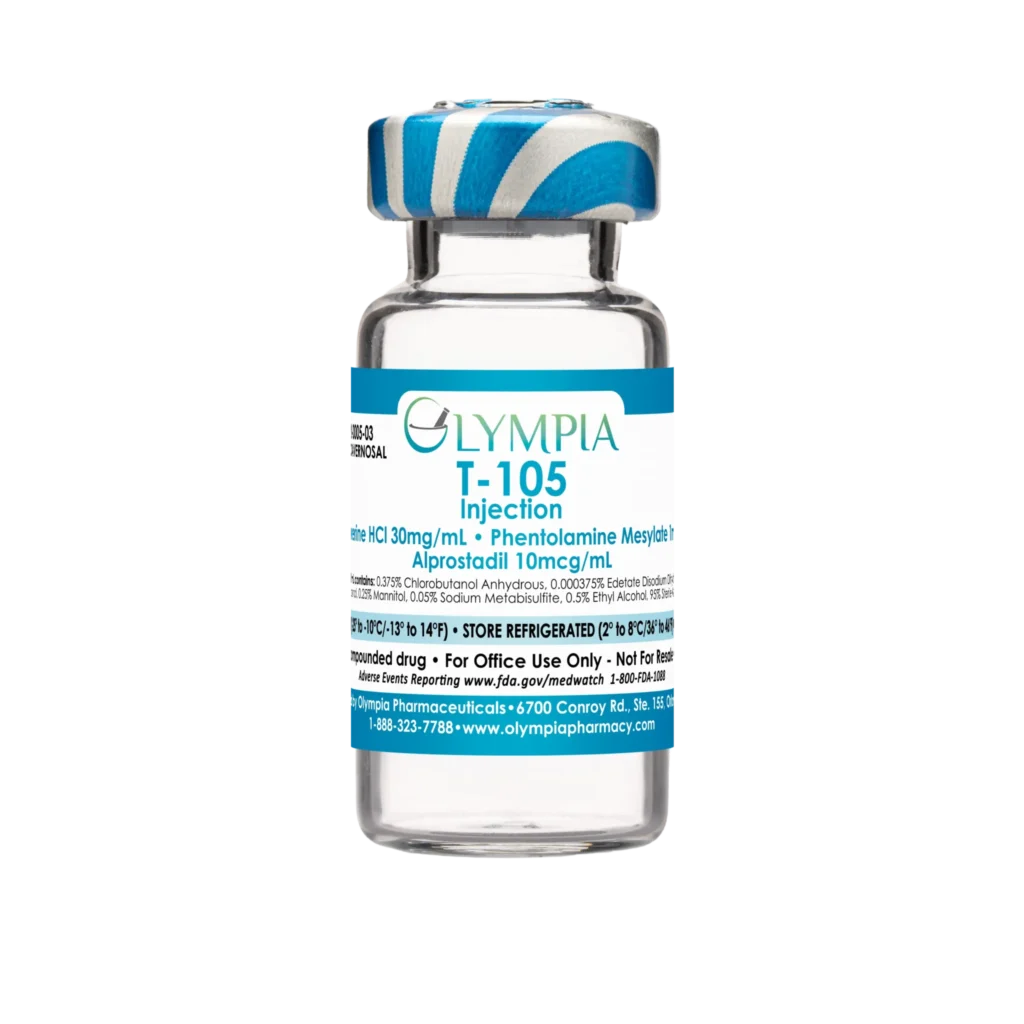As NAD+ becomes more widely recognized for its role in energy production and healthy aging, more people are exploring supplements to support their cellular health. However, the way you take NAD+ can influence how well it works. NAD+ is available in oral and injectable forms. So how do you know whether oral or injectable NAD+ is the better choice for you?
In this blog, we’ll break down the key differences between delivery methods, explore how NAD+ works in the body and highlight why injections may be preferred.
What Is NAD+?
NAD+ (nicotinamide adenine dinucleotide) is a coenzyme found in every cell of the body. It plays a central role in cellular energy production, helping convert nutrients into the fuel your cells run on.
Beyond energy production, NAD+ is also crucial for supporting DNA repair[1][2], regulating inflammation[2] and maintaining mitochondrial function[2]. Mitochondria — your cells’ energy centers — rely on adequate NAD+ levels to function optimally. When mitochondrial activity declines, it can lead to increased cellular damage and contribute to visible signs of aging[3].
Research also suggests that NAD+ is critical for DNA repair and cellular resilience after UV damage[1], which are key factors in preventing visible aging.
How NAD Works in the Body
NAD+ helps your body generate energy by fueling mitochondria — the “powerhouses” of cells. It acts as a key electron carrier in metabolic reactions, allowing cells to turn food into ATP, the body’s main energy source. NAD+ also activates enzymes like sirtuins, which play roles in cellular stress response, inflammation control and metabolic regulation. Additionally, NAD+ helps maintain the stability of your DNA, which is critical for reducing the risk of mutations that can lead to premature aging and disease.
Why Supplement It?
As we age, NAD+ production slows and the molecule breaks down more quickly, leading to lower overall levels in the body. This drop is linked to greater susceptibility to age-related conditions like cognitive decline[4] and metabolic dysfunction[5]. Lower NAD+ levels are also associated with repair enzymes like PARP1 and sirtuins becoming less effective, allowing DNA damage and cellular stress to accumulate[1]. This contributes to reduced collagen production, chronic inflammation and the buildup of senescent cells (sometimes called “zombie cells”) that weaken the skin’s structure over time[1].
To address this, longevity and regenerative medicine researchers have increasingly focused on supplementing NAD+ and its precursors, including nicotinamide (NAM), nicotinamide riboside (NR) and nicotinamide mononucleotide (NMN). One area where this is already showing promise is skin health. Research suggests that boosting NAD+ levels, particularly through supplementation of NAM, can help repair sun-damaged skin and reduce the appearance of premature aging[6][7].
By maintaining NAD+ levels, the body may better manage energy production, cellular stress response and age-related cellular decline.
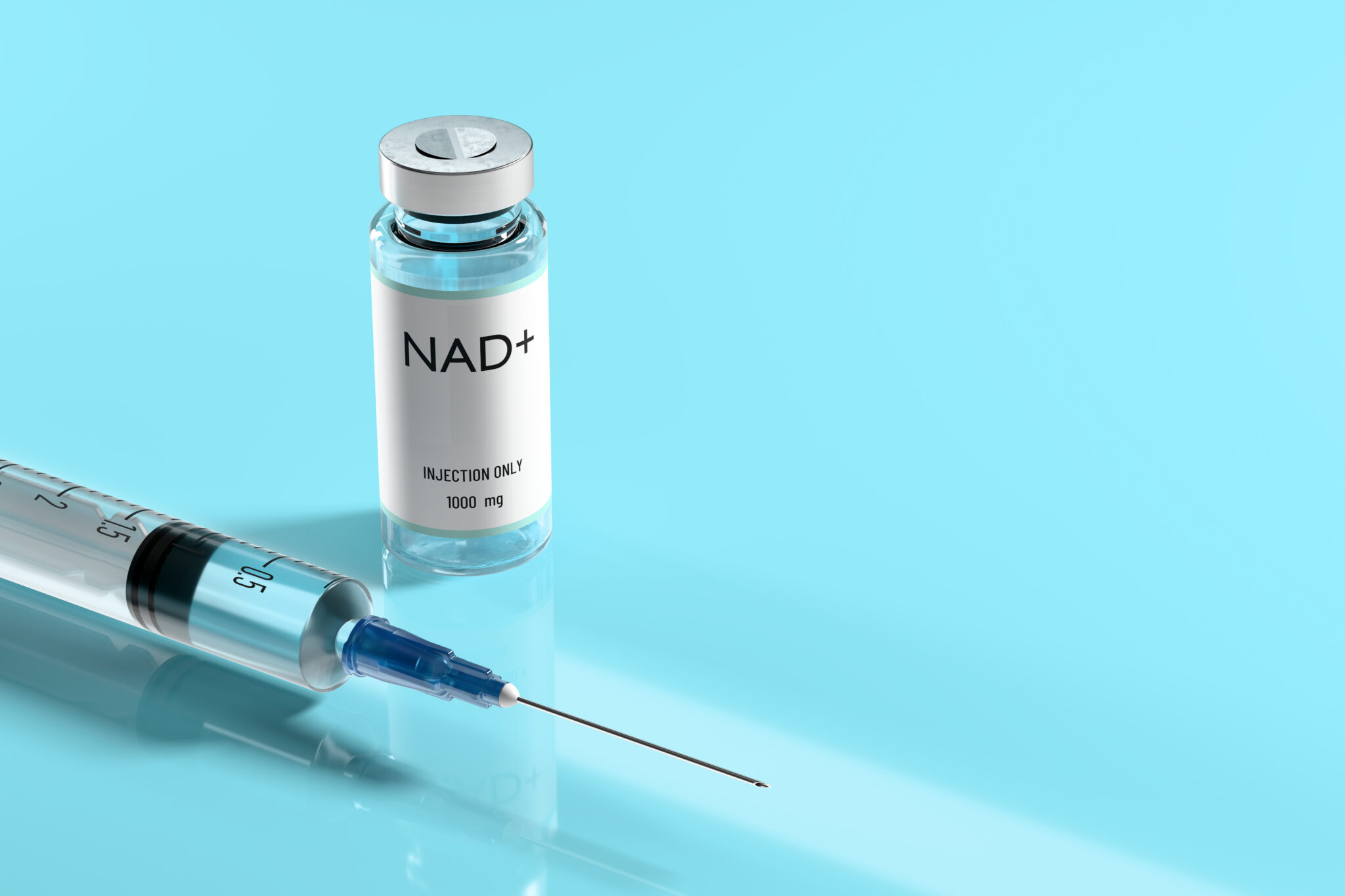
Comparing Oral vs. Injectable NAD+
As interest in NAD+ therapy continues to grow, both oral and injectable forms are now commonly used for supplementation. While oral NAD+ supplements are widely available, many patients and providers prefer injectable formulations due to their enhanced bioavailability and more consistent results.
Absorption and Delivery Differences
Oral NAD+ supplements must pass through the gastrointestinal (GI) tract, where enzymatic breakdown and variable absorption can limit how much NAD+ actually reaches circulation[8]. Digestive efficiency, gut health and individual metabolism all influence oral bioavailability. Moreover, multiple studies have shown that oral NAD+ is poorly absorbed and does not significantly raise NAD+ levels in the plasma or tissues[9].
In contrast, injectable NAD+ bypasses the digestive system entirely, entering the bloodstream directly[8] for more immediate and efficient cellular uptake. This direct delivery route ensures the full dose reaches circulation without being degraded or lost in the gut. Currently, intravenous NAD+ infusion is the only recognized method for reliably increasing NAD+ levels[10].
Dosing Consistency
Injections offer a more controlled and consistent method of delivering NAD+. Oral NAD+ absorption can fluctuate significantly depending on the timing of administration, the presence of food in the digestive system, as well as an individual’s overall gut health. Injectable NAD+ allows practitioners to formulate precise dosing protocols with predictable plasma concentrations, making it easier to track response and adjust as needed.
Time to Effect
Many users and clinicians report that NAD+ injections act faster than oral forms. Because injectable NAD+ becomes bioavailable more rapidly, it may more quickly engage in cellular processes such as mitochondrial energy production, DNA repair and oxidative stress regulation. This can be especially beneficial for individuals seeking support for acute fatigue, high-performance recovery or age-related cellular stress.
Considering injectable NAD+ for your patients? Get started now →
Why Patients and Providers Often Choose NAD+ Injections
Supports Energy and Recovery Routines
Injectable NAD+ is frequently integrated into wellness programs designed to support vitality, post-exertion recovery and healthy aging. Under provider supervision, NAD+ injections may be included in protocols addressing low energy, brain fog, stress response and general mitochondrial health. Because NAD+ is used in hundreds of enzymatic reactions throughout the body, particularly in tissues with high energy demands, replenishing NAD+ levels directly via injection may support a more robust and sustainable cellular response.
Convenient for Those With Absorption Concerns
For patients with compromised digestive function, such as those with inflammatory bowel conditions, post-bariatric surgery recovery or age-related malabsorption, oral NAD+ may not provide reliable results. In these cases, injectable NAD+ may offer a more dependable option by bypassing the GI tract altogether. It helps ensure that therapeutic doses reach systemic circulation without the variability introduced by digestion.
Why Choose Olympia Pharmacy’s NAD+ Injections?
At Olympia, we understand that consistent delivery matters, especially when supporting energy metabolism and high-demand cellular processes. That’s why we offer high-quality compounded NAD+ injections to licensed healthcare providers, prepared in our CGMP-compliant facility and backed by rigorous quality and sterility standards.
Olympia’s NAD+ injections are intended for use in professionally guided wellness protocols, where injectable delivery may be preferred for more dependable uptake. Whether addressing cellular stress, low energy or supporting overall vitality, Olympia’s compounded NAD+ products are formulated with precision and reliability in mind.
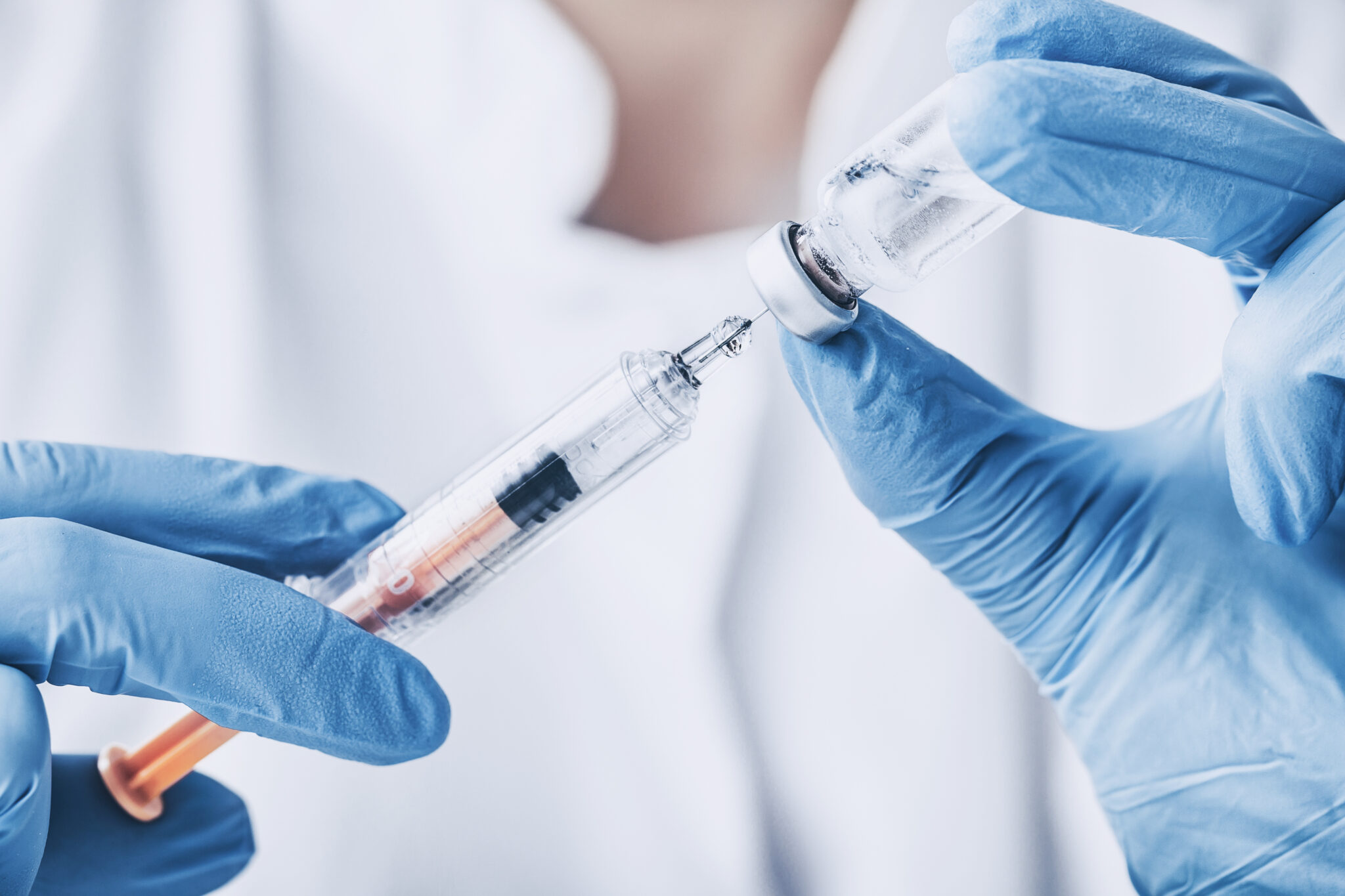
Why Injectable NAD+ May Offer a More Reliable Option
When your cells have the energy they need to function, everything works better — from brain clarity and focus to physical recovery and metabolic balance. NAD+, a compound naturally found in every cell, plays a central role in these processes by helping convert nutrients into usable energy and supporting cell repair systems.
For individuals with digestive challenges or absorption concerns, NAD+ injections may also offer a more dependable way to support NAD+ levels and cellular repair mechanisms, especially when included in a professionally managed wellness routine. Olympia’s NAD+ injections are designed with precision, purity and provider needs in mind.
[button url=”https://www.olympiapharmacy.com/contact/products/?ref=nad-cta”]Contact Us[/button]
Resources
1. Conlon NJ. The Role of NAD+ in Regenerative Medicine. Plast Reconstr Surg. 2022 Oct 1;150(4 Suppl ):41S-48S. doi: 10.1097/PRS.0000000000009673. Epub 2021 Sep 28. PMID: 36170435; PMCID: PMC9512238.
2. Braidy N, Liu Y. NAD⁺ therapy in age-related degenerative disorders: A benefit/risk analysis. Exp Gerontol. 2020 Jul;132:110831. doi: 10.1016/j.exger.2020.110831. Epub 2020 Jan 15. PMID: 31958672.
3. Brand MD, Orr AL, Perevoshchikova IV, Quinlan CL. The role of mitochondrial function and cellular bioenergetics in ageing and disease. Br J Dermatol. 2013 Jul;169 Suppl 2(0 2):1-8. doi: 10.1111/bjd.12208. PMID: 23786614; PMCID: PMC4321783.
4. Covarrubias AJ, Perrone R, Grozio A, Verdin E. NAD+ metabolism and its roles in cellular processes during ageing. Nat Rev Mol Cell Biol. 2021 Feb;22(2):119-141. doi: 10.1038/s41580-020-00313-x. Epub 2020 Dec 22. PMID: 33353981; PMCID: PMC7963035.
5. Schultz MB, Sinclair DA. Why NAD⁺ declines during aging: It’s destroyed. Cell Metab. 2016 Jun 14;23(6):965-966. doi: 10.1016/j.cmet.2016.05.022. PMID: 27304506.
6. Radenkovic D, Reason, Verdin E. Clinical Evidence for Targeting NAD Therapeutically. Pharmaceuticals (Basel). 2020 Sep 15;13(9):247. doi: 10.3390/ph13090247. PMID: 32942582; PMCID: PMC7558103.
7. Camillo L, Zavattaro E, Savoia P. Nicotinamide: A Multifaceted Molecule in Skin Health and Beyond. Medicina (Kaunas). 2025 Feb 1;61(2):254. doi: 10.3390/medicina61020254. PMID: 40005371; PMCID: PMC11857428.
8. Stielow M, Witczyńska A, Kubryń N, Fijałkowski Ł, Nowaczyk J, Nowaczyk A. The Bioavailability of Drugs-The Current State of Knowledge. Molecules. 2023 Dec 11;28(24):8038. doi: 10.3390/molecules28248038. PMID: 38138529; PMCID: PMC10745386.
9. She J, Sheng R, Qin ZH. Pharmacology and Potential Implications of Nicotinamide Adenine Dinucleotide Precursors. Aging Dis. 2021 Dec 1;12(8):1879-1897. doi: 10.14336/AD.2021.0523. PMID: 34881075; PMCID: PMC8612620.
10. Braidy N, Berg J, Clement J, Khorshidi F, Poljak A, Jayasena T, Grant R, Sachdev P. Role of Nicotinamide Adenine Dinucleotide and Related Precursors as Therapeutic Targets for Age-Related Degenerative Diseases: Rationale, Biochemistry, Pharmacokinetics, and Outcomes. Antioxid Redox Signal. 2019 Jan 10;30(2):251-294. doi: 10.1089/ars.2017.7269. Epub 2018 May 11. PMID: 29634344; PMCID: PMC6277084.

